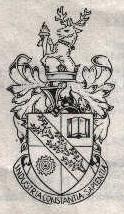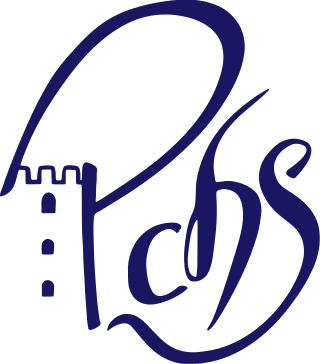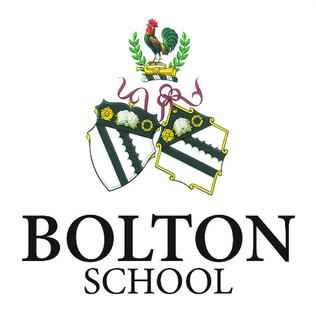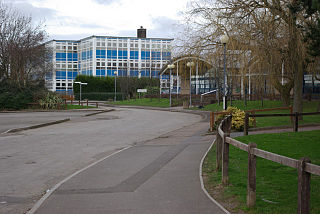
Derwent Valley Mills is a World Heritage Site along the River Derwent in Derbyshire, England, designated in December 2001. It is administered by the Derwent Valley Mills Partnership. The modern factory, or 'mill', system was born here in the 18th century to accommodate the new technology for spinning cotton developed by Richard Arkwright. With advancements in technology, it became possible to produce cotton continuously. The system was adopted throughout the valley, and later spread so that by 1788 there were over 200 Arkwright-type mills in Britain. Arkwright's inventions and system of organising labour was exported to Europe and the United States.

The Derwent is a river in Derbyshire, England. It is 50 miles (80 km) long and is a tributary of the River Trent, which it joins south of Derby. Throughout its course, the river mostly flows through the Peak District and its foothills.

Littleover is a village and suburb in the city of Derby, in Derbyshire, England, between Rose Hill, Normanton, Sunny Hill and Mickleover, about three miles (4.8 km) southwest of Derby city centre.

Cromford is a village and civil parish in Derbyshire, England, in the valley of the River Derwent between Wirksworth and Matlock. It is 17 miles (27 km) north of Derby, 2 miles (3.2 km) south of Matlock and 1 mile (1.6 km) south of Matlock Bath. It is first mentioned in the 11th-century Domesday Book as Crumforde, a berewick of Wirksworth, and this remained the case throughout the Middle Ages. The population at the 2011 Census was 1,433. It is principally known for its historical connection with Richard Arkwright and the nearby Cromford Mill, which he built outside the village in 1771. Cromford is in the Derwent Valley Mills World Heritage Site.

Cromford railway station is a Grade II listed railway station owned by Network Rail and managed by East Midlands Railway. It is located in the village of Cromford in Derbyshire, England. The station is on the Derwent Valley Line 15+1⁄2 miles (24.9 km) north of Derby towards Matlock.

Ambergate is a village in Derbyshire, England, situated where the River Amber joins the River Derwent, and where the A610 road from Ripley and Nottingham joins the A6 that runs along the Derwent valley between Derby to the south and Matlock to the north. Sawmills and Ridgeway are neighbouring hamlets, and Alderwasley, Heage, Nether Heage and Crich are other significant neighbouring settlements. The village forms part of the Heage and Ambergate ward of Ripley Town Council with a population of 5,013 at the 2011 Census. Ambergate is within the Derwent Valley Mills UNESCO World Heritage site, and has historical connections with George Stephenson; Ambergate is notable for its railway heritage and telephone exchange. Ambergate has an active community life, particularly centred on the school, pubs, churches, sports clubs; and annual village carnival which is relatively large and consistent locally, with popular associated events in carnival week and throughout the year. The carnival is organised by a voluntary committee. Shining Cliff woods, Thacker's woods and Crich Chase border the village.
Clevedon School, formerly known as Clevedon Community School, is a coeducational secondary school located in Clevedon, North Somerset, England. It has over 1350 pupils, in years 7 to 11 in the Lower School and 12 to 13 in the Upper School or sixth form. The school recently regained its Language College status. As of 2023, the headteacher is Jim Smith. The school was part of the Clevedon Learning Trust, a Multi-Academy Trust formed on 1 January 2015 by CEO John Wells. As of 1st March 2023, Clevedon Learning Trust merged with Futura Learning Partnership, with schools in Bristol, North Somerset and Somerset.

The Derby High School is a secondary school, located on Radcliffe Road, Bury, Greater Manchester, England. It opened in September 1959 as the Derby Grammar School, a new school that offered both a grammar and a technical education. Some of the pupils moved from Bury High School, a Grammar School on nearby Parliament Street, which closed when the Derby opened. They had gone there having passed the Eleven Plus examination. Other pupils came from Bury Junior Technical School having attended that school from the age of 13 years. The school was formed by merging those two schools into a grammar-technical school. In September 1979 it became a comprehensive school and its sixth form was closed. There are extensive playing fields to the front of the school and the school is easily recognised with its distinctive tower. The school has changed most in the past 15 years with The Derby Sports Centre opening in 2015, Inspire opening First as a boys Sixth form which is now home to Media, Drama, Dance & Music. With the latest building Create replacing the old boys sports hall.

Prudhoe Community High School is a coeducational high school and sixth form located in Prudhoe, Northumberland, England.

Building Schools for the Future (BSF) was the name given to the British government's investment programme in secondary school buildings in England in the 2000s. Around half of the work was procured under the private finance initiative. The delivery of the programme was overseen by Partnerships for Schools (PfS), a non-departmental public body formed through a joint venture between the Department for Children, Schools and Families (DCSF), Partnerships UK and private sector partners. The programme was cancelled in 2010.

Littleover Community School is a coeducational secondary school situated on Pastures Hill, Littleover, Derbyshire in England, with pupils aged 11–18.

Derby School was a school in Derby in the English Midlands from 1160 to 1989. It had an almost continuous history of education of over eight centuries. For most of that time it was a grammar school for boys. The school became co-educational and comprehensive in 1972 and was closed in 1989. In 1994 a new independent school called Derby Grammar School for boys was founded.

Sheffield High School (SHS) is an independent girls' school in Sheffield, South Yorkshire, England part of the Girls' Day School Trust (GDST).

Chilwell School is a secondary school located in Chilwell, near Nottingham, England. The school is located adjacent to the Chilwell Olympia sports complex and has an attached sixth-form college. In January 2005, the school was designated a specialist school in Arts and Maths and Computing.

Derby Grammar School is a selective independent school in Littleover near the city of Derby, England. Founded in 1995 as a continuation of Derby School, founded in 1160, it educates girls and boys between the ages of 4 and 18.

Bolton School is a private day school in Bolton, Greater Manchester. It comprises a co-educational nursery, co-educational infant school, single sex junior schools and single sex senior schools including sixth forms. With over 2,500 pupils, it is one of the largest independent day schools in the country.

The Millennium Centre was located in Littleover, Derby. It was a post-16 sixth form centre, run jointly by Derby Moor Community Sports College Trust and Littleover Community School for students who wished to further their education by completing A Levels. The majority of students come from the two schools. The sixth form had joint heads who were initially; Jamie Henshaw for Derby Moor and Rob Archer for Littleover. The Millennium Centre was split between the two schools, after a decade of cooperation.

Derby High School is a private day school for children aged 3 to 18 in the suburb of Littleover in Derby. Formerly girls only in the Senior School, from September 2019 Derby High accepted boys into Years 7 and 12. In 2022 the school will be fully co-educational with boys in all year groups. The Primary School is co-educational, taking boys and girls from age 3 to 11. The school is a member of IAPS.

Alsop High School is a coeducational secondary school and sixth form located in Walton, Liverpool, L4 6SH, England. The school is well known for its white and brown remaining one of the hallmarks of Walton village.






















